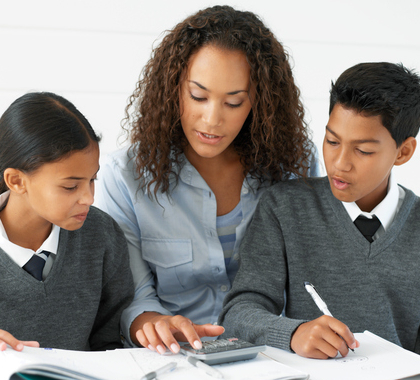Legislation in the Alabama Senate would create the Parent’s Choice Program, a universal education savings account (ESA) program open to all Alabama children beginning with the 2024–25 school year. If passed, the ESAs would be available to any Alabama family to pay for tuition and fees for their children at private and parochial schools. The funds could also be used to pay for textbooks and curriculum, tutoring services, summer educational programs, vocation schooling, and educational therapies and services.
The ESAs could also be used to cover the fees required to take national standardized achievement tests, such as the SAT or ACT, as well as entrance examinations, tuition, and fees at postsecondary institutions.
The program would be open to public schools students and children being home schooled for the 2022–23 school year, and would expand to include any Alabama child whose family has an adjusted gross income below 200 percent of the federal poverty level before going fully universal the following year.
Copious empirical research on other school choice programs makes clear these programs offer families improved access to high-quality schools that meet their children’s unique needs and circumstances, and that these programs improve academic performance and attainment and deliver a quality education at lower cost than traditional public schools. Additionally, these programs benefit public school students and taxpayers by increasing competition, decreasing segregation, and improving civic values and practices.
Research also shows students at private schools are less likely than their public school peers to experience problems such as alcohol abuse, bullying, drug use, fighting, gang activity, racial tension, theft, vandalism, and weapon-based threats. There is also a strong causal link suggesting private school choice programs improve the mental health of participating students.
Further, Alabama’s public schools are habitually failing the state’s children. In 2019, only 28 percent of public school fourth-graders and 21 percent of eighth-graders tested “proficient” to grade level in mathematics on the National Assessment of Educational Progress (NAEP) examination, colloquially known as the “Nation’s Report Card.” Just 28 percent of fourth-graders and 24 percent of eighth-graders tested “proficient” in reading. Essentially, and embarrassingly, the state’s public schools failed to educate roughly 80 percent of Alabama children to grade-level proficiency in reading and math.
It is probably these dismal results, and also because teacher unions have repeatedly played politics with school closings during the COVID-19 pandemic in direct conflict with students’ best interests, that education choice programs like ESAs are more popular with parents than ever before. Polling by EdChoice released in September 2021 found 78 percent support for ESAs, for example, among the general public and 84 percent among current school parents.[12] These findings are mirrored in the American Federation for Children’s seventh-annual National School Choice Poll, released in January 2021, which found 78 percent support for ESA programs.
The goal of public education in Alabama today and in the years to come should be to allow all parents to choose which schools their children attend, require every school to compete for every student who walks through its doors, and make sure every child has the opportunity to attend a quality school. Establishing a universal ESA program is a logical step forward in meeting that goal. There has not been a time when providing these opportunities has been more urgent and more needed than right now.
The following documents provide more information about education choice programs.
Fiscal Effects of School Choice
https://www.edchoice.org/wp-content/uploads/2021/11/Fiscal-Effects-of-School-Choice-Condensed.pdf
This EdChoice analysis of 40 private educational choice programs in 19 states plus D.C. summarizes the facts and evidence on the fiscal effects of educational choice programs across the United States and finds they have provided up to $28.3 billion in net fiscal savings to state and local taxpayers through Fiscal Year 2018. The programs in the analysis include three education savings accounts programs (ESAs), 19 school voucher programs, and 18 tax-credit scholarship programs.
The 123s of School Choice (2020 Edition)
https://www.edchoice.org/wp-content/uploads/2020/04/123s-of-School-Choice-2020-4.pdf
This report from EdChoice is an in-depth review of the available research on private school choice programs in America. Areas of study include: private school choice program participant test scores, program participant attainment, parent satisfaction, public school students’ test scores, civic values and practices, racial/ethnic integration and fiscal effects.
A Win-Win Solution: The Empirical Evidence on School Choice (Fourth Edition)
http://www.edchoice.org/wp-content/uploads/2016/05/A-Win-Win-Solution-The-Empirical-Evidence-on-School-Choice.pdf
This paper by EdChoice details how a vast body of research shows educational choice programs improve academic outcomes for students and schools, saves taxpayers money, reduces segregation in schools, and improves students’ civic values. This edition brings together a total of 100 empirical studies examining these essential questions in one comprehensive report.
The Public Benefit of Private Schooling: Test Scores Rise When There Is More of It
https://object.cato.org/sites/cato.org/files/pubs/pdf/pa830.pdf
This Policy Analysis from the Cato Institute examines the effect increased access to private schooling has had on international student test scores in 52 countries. The Cato researchers found that a 1 percentage point increase in the share of private school enrollment would lead to moderate increases in students’ math, reading, and science achievement.
The Effects of School Choice on Mental Health
https://papers.ssrn.com/sol3/papers.cfm?abstract_id=3272550
This study from Corey DeAngelis at the Cato Institute and Angela K. Dills of Western Carolina University empirically examines the relationship between school choice and mental health. It finds that states adopting broad-based voucher programs and charter schools witness declines in adolescent suicides and suggests that private schooling reduces the number of times individuals are seen for mental health issues.
Child Safety Accounts: Protecting Our Children through Parental Freedom
https://heartland.org/wp-content/uploads/documents/CSAccountsPB.pdf
In this Heartland Policy Brief, Vicki Alger, senior fellow at the Independent Women’s Forum and research fellow at the Independent Institute, and Heartland Policy Analyst Tim Benson detail the prevalence of bullying, harassment, and assault taking place in America’s public schools and the difficulties for parents in having their child moved from a school that is unsafe for them. Alger and Benson propose a Child Safety Account program, which would allow parents to immediately have their child moved to a safe school – private, parochial, or public – as soon as parents feel the public school their child is currently attending is too dangerous to their child’s physical or emotional health.
Nothing in this Research & Commentary is intended to influence the passage of legislation, and it does not necessarily represent the views of The Heartland Institute. For further information on this subject, visit School Reform News, The Heartland Institute’s website, and PolicyBot, Heartland’s free online research database.
The Heartland Institute can send an expert to your state to testify or brief your caucus; host an event in your state; or send you further information on a topic. Please don’t hesitate to contact us if we can be of assistance! If you have any questions or comments, contact Heartland’s government relations department, at [email protected] or 312/377-4000.




